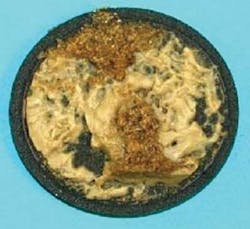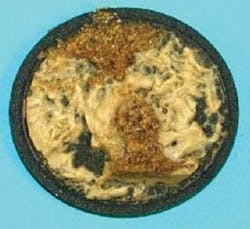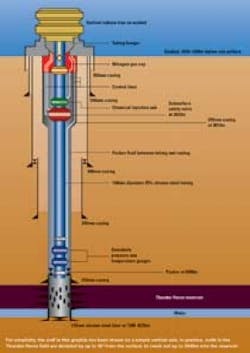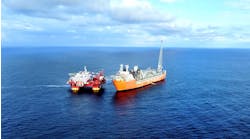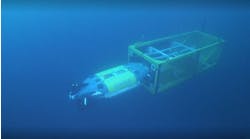John Waggoner - Technology Editor, Drilling & Production
The Thunder Horse project in the Gulf of Mexico was chosen for this year’s Top 5 awards as a major contributor to deepwater technology, and one of the most important new sources of US energy supply.
As an energy resource, Thunder Horse holds the potential to produce around 1 Bbbl of oil, says operator BP. Since production began in 2008, a total of eight subsea producing wells have been put into operation, with more planned for 2010 and beyond. Today, the field is the largest deepwater producing asset in the world and has an expected life of 25-30 years.
Although first production occurred in June 2008, the editors ofOffshore selected Thunder Horse for recognition this year since many details of the project were not revealed until early 2009.
BP is the operator of Thunder Horse with 75% ownership, with its partner ExxonMobil, with 25%. At the time it was brought into production, it was the second largest producing field in the US and represented a major leap forward for many aspects of deepwater production technology.
Sitting in 6,000 ft (1,829 m) of water about 150 mi (241 km) offshore, theThunder Horse production/drilling/quarters (PDQ) semisubmersible is the largest production semi ever built, with a total displacement of 130,000 tons (117,934 metric tons). The topsides of Thunder Horse covers an area the size of about three football fields, and is packed with equipment and systems to treat and export 250,000 b/d of oil plus associated gas, although recent debottlenecking has increased the platform’s processing capability. Its dual derrick drilling rig can drill and maintain up to 20 subsea wells beneath the platform, expanding over distances greater than 9,000 m (29,527 ft) in measured depth. Additional subsea wells are located around the field, all wells being tied back to the PDQ through subsea manifolds, flowlines, and risers.
Thunder Horse’s production-drilling-quarters (PDQ) facility is the largest semisubmersible production platform in the world. Photo courtesy of BP.
In all, 28 production and five water injection wells are planned over the life of the asset. After processing reservoir fluids onboard the PDQ, oil and gas are exported through separate pipelines to the BP-operated Mardi Gras transmission system, the industry’s highest capacity deepwater pipeline.
The scale of the project and its technical difficulty prompted innovation from the operators, including imaging and reservoir surveillance, drilling and completions equipment, and subsea and topsides production equipment.
Much of the technology developed for the project did not exist when the field was discovered in 1999. In fact, new capabilities, systems and equipment were developed for virtually every phase of the Thunder Horse project from the initial discovery to production, through challenges that brought out the best in BP’s people and the suppliers to make the project possible.
With so much new technology required, arguably the greatest accomplishment in this project was the coordination and integration of each detail. This approach was vital to avoid small problems that could become enormous simply due to the magnitude of the project’s scale.
One of the most obvious challenges for BP was the location of the project in ultra deepwater in a region notorious for both loop currents and the menace of hurricanes. A new generation of drilling rigs, such as the derrick rigs on theDiscoverer Enterprise drillship and the PDQ had to be designed for these extremes.
The project also had to deal with reservoir temperatures up to 270º F (132° C), pressures up to 18,000 psi (124 MPa), and reservoir flow rates of up to 50,000 b/d of oil per well.
For these reasons, larger bore tubing would be required inside the wells than is typical for the Gulf of Mexico. The tubing extended out to 7 in. (18 cm) in diameter and had to be constructed of high-strength materials.
The South field features a four-way structural closure while the North field is a three-way structural closure. The plan for development targeted three major reservoirs ranging from 18,000 ft to 30,000 ft (5,486 m to 9,144 m). Water injection capability was planned for reservoir pressure support and enhanced recovery.
Thunder Horse has real-time monitoring and analysis of production rates for each well in order to keep the processing facility fully loaded and to forecast when water breakthroughs might occur in the reservoir.
The challenge was difficult due to the rate of production, since even small changes in downhole pressure or temperature could be multiplied to have a significant impact on production plans.
The subsurface team incorporated three gauges plus two independent controls on each of the three gauges for each Thunder Horse well. These redundancies were built into the system to provide reliable information throughout the life of the wells.
Some of these wells had to have up to eight casing strings to be able to drill within the narrow pore-pressure-to-fracture gradient window. Because the fracture gradient of the comparatively young Miocene sedimentary rocks is low with a high pore pressure, the weight of drilling has to be controlled precisely, within ounces per gallon. As this “window” narrows, the operator has to put in another casing string to prevent reservoir fluids from invading. Additional strength came from a BP proprietary technique called “stress cages” which involves the application of additives to the drilling mud in order to build a “cage” of stronger rock around the wellbore.
There were over 100 different first-time technologies deployed for the first well completion alone. One of these innovations is a packer fluid used in the wells to fill the annular space between tubing and outside casing.
As the hot well fluids heat the bore, the packer fluid expands and rapidly builds up pressure in the sealed annulus, particularly during well startup when the packer fluid is cold. In extreme circumstances, this effect could theoretically cause the tubing to collapse or to burst the casing. Cooling contractions during shutdown also could cause damage. The normal practice of bleeding this pressure off the well into the flowline was not practical because pressures in the Thunder Horse flowlines are so high.
As a result, the completions team had to develop a new method to insert a nitrogen gas cap in the annulus above the packer fluid to absorb the effect of the changing packer fluid volume, acting in a similar way to a car’s shock absorber.
Sophisticated metallurgy was required to prevent corrosion due to the presence of hydrogen sulfide from field-water injection and carbon dioxide – technology that did not exist when the field was discovered in 1999. Because the volumes and pressures are so high, the risers have to withstand punishing ocean currents, as well as a new type of “flex-joint” to support the risers.
Even the size of the flexible risers for water injection meant a leap forward for technology. Some of the field’s wells are up to 10 km (6.2 mi) from the PDQ. The HP/HT wells are in seven drill centers around each field, each with a manifold that connects the well to steel flowlines on the seabed. The near-freezing ocean temperatures at this depth mean the high-temperature well fluids could form flow-plugging hydrates, so the lines had to be insulated and have a specially modified, low-dosage chemical inhibitor developed for this purpose.
Five state-of-the-art steel catenary risers (SCRs), considered the most robust in the industry, carry the hydrocarbons from the seabed to the PDQ, with two additional SCRs to transport the processed oil and gas to the export pipelines. These risers are longer and stronger than ever before, with up to 600 mm (23.5 in.) in diameter and up to 40-mm (1.6-in) thick walls to resist the pressures.
Three flexible risers carry treated seawater and produced water from the PDQ to the subsea water injection wells. In all, these risers and flowlines add up to around 75 km (46.5 mi) in length. The multi-core flexible umbilicals that link the subsea components total over 60 km (37 mi) long.
The geology of the Thunder Horse reservoirs mean specific challenges as well. The two reservoirs are found beneath a thick layer of salt, making it difficult to obtain and interpret good seismic images of pay-bearing formations. In this area too, BP led the way with new technologies.
Indeed, the project is responsible for over 70 new subsea products, all of which were subjected to a series of rigorous testing stages including prototype, qualification, endurance, factory acceptance, systems integration, and wet testing before they were included in the subsea systems.
In a sense, the success of the project represents a new generation of technology able to handle the rigors of extreme HP/HT conditions in deepwater, including one of the most extensive and deepest subsea equipment outlays anywhere in the world.
